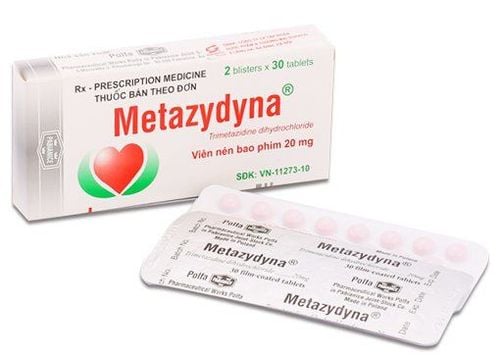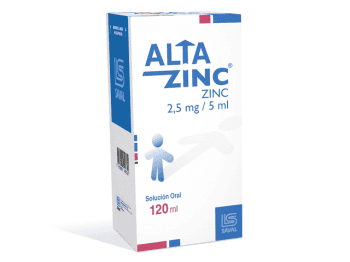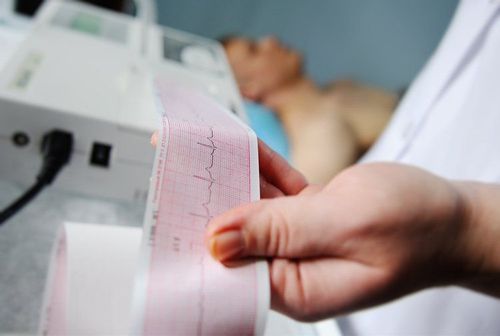This is an automatically translated article.
The article was professionally consulted with Master, Doctor Nguyen Tung Hoanh - Interventional Cardiologist - Department of Resuscitation - Emergency - Vinmec Nha Trang International General Hospital.Atrial flutter is a common supraventricular tachyarrhythmia. Atrial flutter is 2.5 times more common in men than in women and is more common in older patients. The disease often progresses spontaneously from asymptomatic to hemodynamically impaired, even to sudden death.
1. What is atrial flutter?
Atrial flutter, also known as atrial flutter, is a rapid atrial arrhythmia caused by large atrial re-entry loops, rapid depolarization of the atria can be clockwise or anti-clockwise, tachycardia may increase up to 300 times/minute. Atrial flutter is a fairly common cardiac disorder that usually does not last long because atrial flutter tends to revert to sinus rhythm or to atrial fibrillation.
Clinically, atrial flutter is less common than atrial fibrillation, but it has the same cause and effect as atrial fibrillation. Many patients with atrial flutter also have episodes of atrial fibrillation.
The probability of a thromboembolic event in atrial flutter is usually only 1/2 that in atrial fibrillation (except in the case of concomitant atrial fibrillation in patients with atrial flutter). In addition, the mechanism of atrial fibrillation is due to small re-entry loops in the atria, whereas the mechanism of atrial flutter is due to large re-entry loops in the atria, which in turn lead to F-wave amplitudes in flutter. atrial fibrillation will be larger than the F wave amplitude in atrial fibrillation on the electrocardiogram.
2. Typical signs of atrial flutter
Manifestations of atrial flutter depend on the frequency of the ventricular response and the underlying heart disease leading to atrial flutter in the individual patient. If the ventricular rate is <120 beats/min and is regular, a person with atrial flutter may be asymptomatic or experience only vague signs. Most patients with atrial flutter will experience palpitations when the patient's ventricular response rate is faster than 120 beats/min and is irregular.
In addition, atrial flutter can also cause symptoms related to decreased cardiac output such as:
palpitations; Fatigue, decreased exercise capacity; Mild shortness of breath; Feeling like you're about to faint; Severe reduction in cardiac output will cause more shortness of breath, chest pain, and syncope.

Khó thở nhẹ là biểu hiện của bệnh cuồng nhĩ
3. How is atrial flutter diagnosed?
On the typical electrocardiogram, atrial flutter will show regular and continuous atrial activation waves, the sawtooth shape is best seen in leads II, III and aVF;Carotid sinus massage: Increases the level of atrioventricular block, helps reveal atrial flutter waves, if using more drugs that inhibit AV nodal conduction (Adenosine) to slow down the rate of ventricular response. will show a wave of atrial fibrillation. Note that this method is not effective in stopping atrial flutter.
4. How is atrial flutter treated?
General treatment of atrial flutter is similar to atrial fibrillation according to the following principles:
Conversion to sinus rhythm; Maintain sinus rhythm; Control the ventricular rate during atrial flutter; Prophylaxis of thromboembolism, especially in patients with atrial fibrillation. Controlling the ventricular rate in atrial flutter is often more difficult than in atrial fibrillation. Therefore, in the majority of patients with first-time atrial flutter and persistent 1:1 atrioventricular conduction, or in patients with hemodynamic disturbances, the first choice is synchronous cardioversion. or over-frequency pacing method. Usually, just performing cardioversion with low energy (about 50J) is effective. Before performing cardioversion, the doctor will prescribe the patient an anticoagulant similar to that in atrial fibrillation.
If pharmacological cardioversion alone, control the ventricular rate with drugs such as beta-blockers or calcium channel blockers of the Nondihydropyridine class (Verapamil, Diltiazem) before initiating cardioversion. There are many antiarrhythmic drugs used to convert sinus rhythm (especially IA and IC) that slow the rate of atrial depolarization, shorten the refractory period of the atrioventricular node (vagal effect), or occur at all. These two effects lead to a very rapid conversion of atrial flutter with atrial depolarization with a high level of atrioventricular block to a slightly slower atrial depolarization flutter but with a 1:1 block level, which increases the response. ventricular response and may cause hemodynamic disturbances. These drugs can also be used long-term to prevent recurrence of atrial flutter.
Anti-tachycardia over-frequency pacing using a pacemaker can be an alternative to treatment using long-term antiarrhythmic drugs.
In addition, the doctor may also prescribe atrial flutter ablation to cut off the key site of the electrical re-entry loop in atrial flutter, helping to prevent recurrence of atrial flutter, especially typical atrial flutter.
Patients with chronic atrial flutter or recurrent atrial flutter are prescribed oral anticoagulants (warfarin with an INR target of 2-3, direct thrombin inhibitors, or use of anticoagulants). factor Xa) with the same drug selection as in the treatment of atrial fibrillation.
Atrial flutter is a common supraventricular tachyarrhythmia. The disease often progresses spontaneously from asymptomatic to hemodynamically impaired, even to sudden death. Therefore, when there are signs of disease, you should go to medical centers for examination and treatment when necessary.

Khi có dấu hiệu bệnh cuồng nhĩ, người bệnh nên được thăm khám sớm
Cardiology Department of Vinmec International General Hospital is a pioneer in successfully applying the world's most advanced techniques in the treatment of cardiovascular diseases.
A team of highly qualified and experienced specialists: Doctors with qualifications from Master to Professor, Doctor, are reputable in medical treatment, surgery, interventional cardiac catheterization, well-trained. specialized training in the country & abroad. In particular, Prof. TS.BS Vo Thanh Nhan - Cardiology Director of Vinmec Central Park was recognized as the first and only expert in Vietnam to be awarded the "Proctor" certificate on TAVI. State-of-the-art equipment, comparable to major hospitals in the world: The most modern operating room in the world; The most modern silent magnetic resonance imaging machine in Southeast Asia; The CT machine has a super-fast scan speed of only 0.275s/round without the use of anti-arrhythmic drugs. Applying the most advanced advanced cardiovascular techniques in the world in treatment: Painless open heart surgery; Percutaneous aortic intervention without general anesthesia; Treatment of mitral regurgitation through the catheter has a success rate of 95%; Ventricular-assisted artificial heart transplantation for patients with end-stage heart failure prolongs quality of life beyond 7 years. Cooperating with leading cardiovascular centers in Vietnam and the world such as: National Heart Institute, Cardiology Department of Hanoi Medical University, University of Paris Descartes - Georges Pompidou Hospital (France), University of Pennsylvania (France), University of Pennsylvania (France), University of Pennsylvania (France). United States)... with the aim of updating the most modern cardiovascular treatments in the world.
Please dial HOTLINE for more information or register for an appointment HERE. Download MyVinmec app to make appointments faster and to manage your bookings easily.













